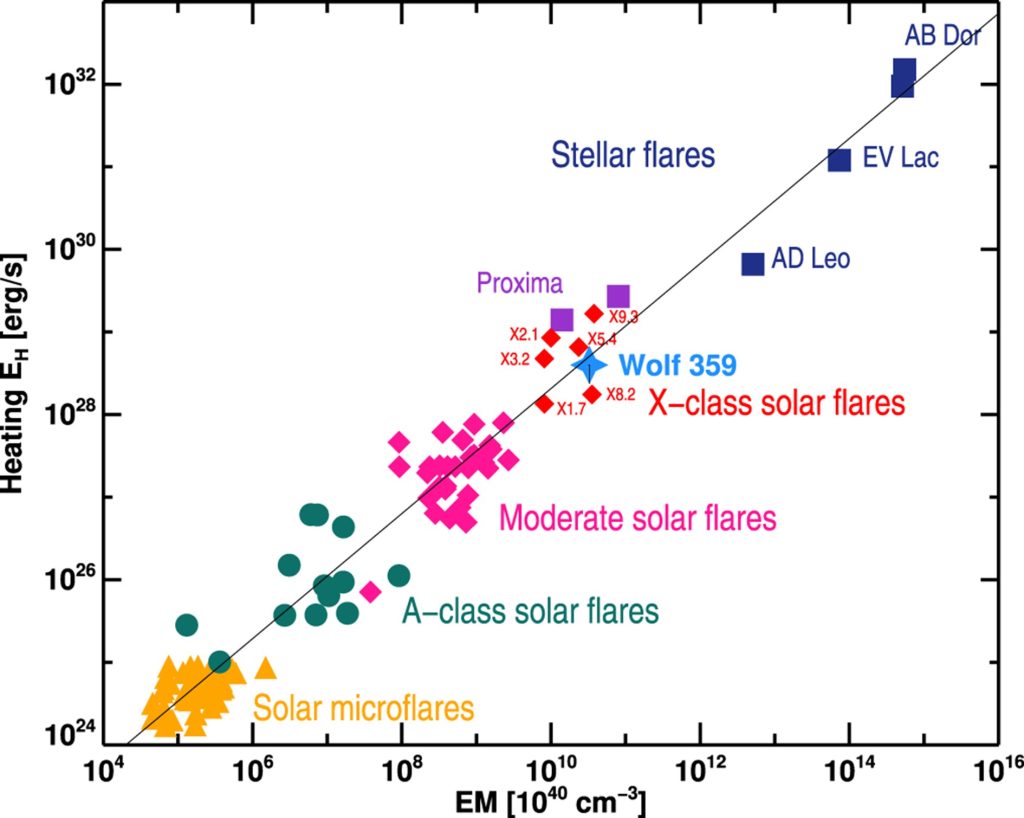Analysis of an X-class flare on the Wolf 359 star
Through the observations of the Kepler and TESS missions, in recent years our knowledge on flares observable in white light on many kinds of stars has greatly increased. These phenomena are most commonly observed for small-mass main sequence stars described as red dwarves. The nature of these phenomena shows a clear similarity to solar flares, but very often the amount of energy released for stellar flares is significantly larger than for strong solar flares. It is fair to ask, then, if solar and stellar flares are generated by the same mechanism.
On the nearby red dwarf Wolf 359, which is located at 2.41 pc, we managed to find a flare recorded not only by the TESS mission, but also by the XMM-Newton X-ray telescope. This star is much smaller than the Sun, its size is slightly larger than Jupiter. The unique set of measurements allowed us to make an in-depth analysis of this flare. We have managed to show that energetically it belongs to both categories of strong solar flares and of weaker stellar flares. The evolution of the light curve, both in the growth and decay stage, allowed us to estimate its geometrical parameters, which turned out to be very similar to parameters of solar flares. Spectra obtained by the RGS instrument in the XMM mission also gave us the opportunity to determine the density of matter in the flare. It turned out to be an order of magnitude higher than in solar flares, which, as we suppose, is an effect of both the small size of the star and its stronger gravitational field intensity.
This flare is an interesting example of an intermediary phenomenon and in our opinion it confirms the supposition that solar and stellar flares are formed according to the same physical mechanism, which is the sudden release of energy in complex magnetic structures in the coronae of individual stars. Solar flares appear to us here rather as patterns of weaker phenomena while for other stars we usually observe phenomena many times stronger. This difference is in part caused by the observational selection. Distances to stars are much greater than the distance to the Sun, therefore for them we can only observe strong or very strong flares. The strongest stellar flares can be up to ten orders of magnitude stronger than the weakest flares on the Sun, which is indicative of great differences in the level of magnetic activity between stars.
The work by M. Pietras, R. Falewicz, M. Siarkowski, A. Kepa, K. Bicz, and P. Preś can be found at:

The graph compares the strength of solar and stellar flares, represented here by the emission measure (EM), and the rate of energy release in these flares. The relationship retains a clear consistency for a remarkably wide range of variations, reaching as much as 10 orders of magnitude.
